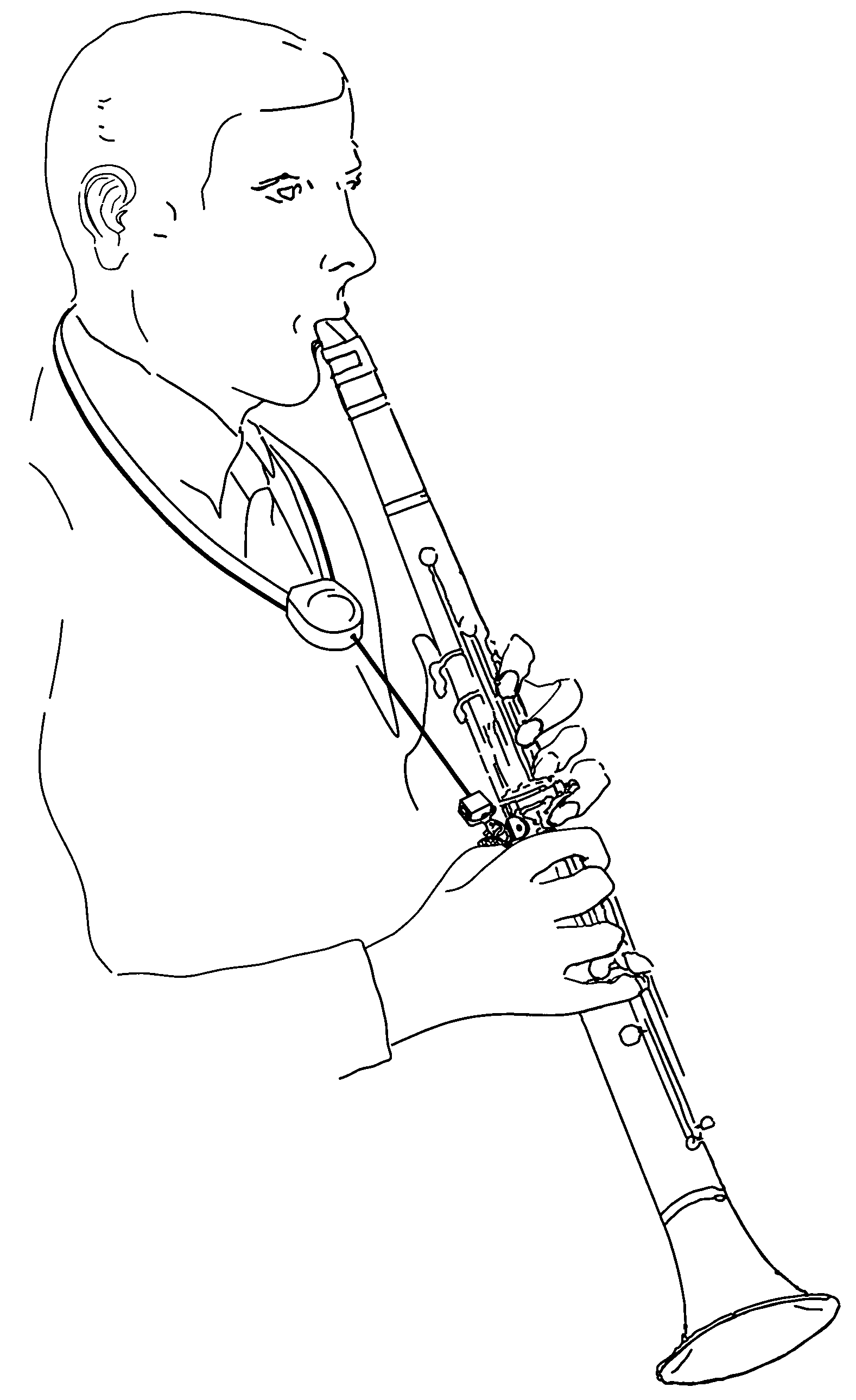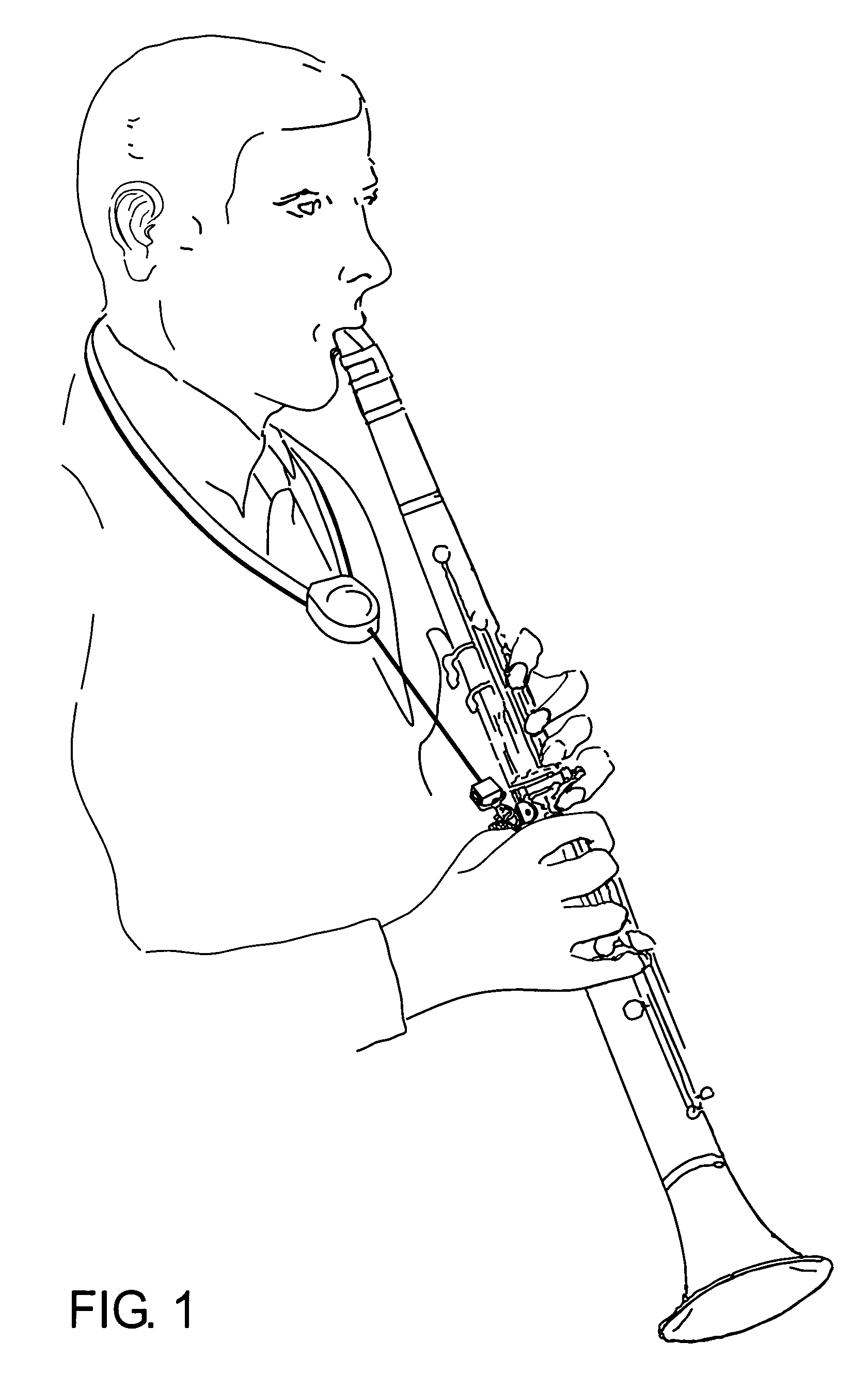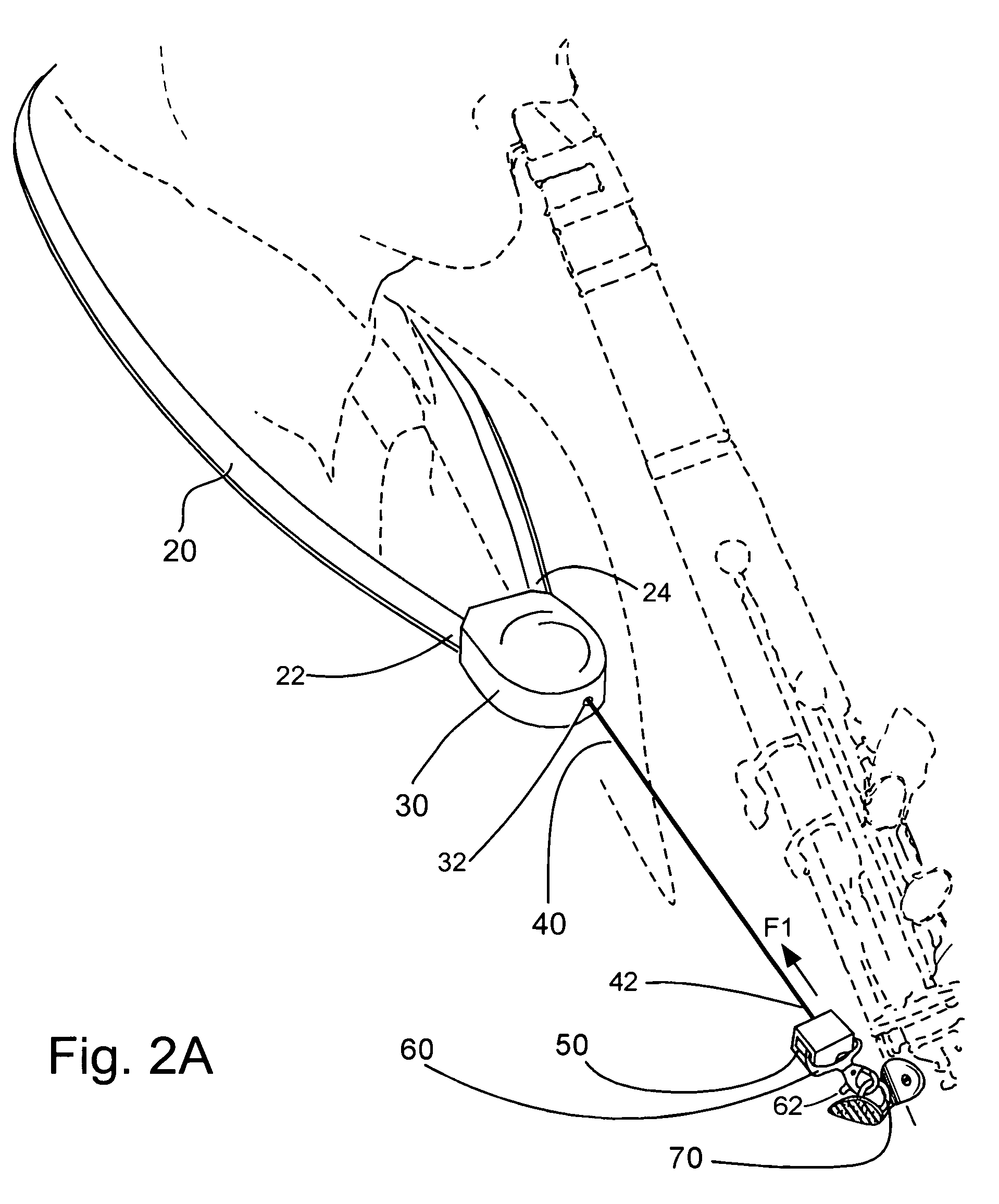Weight-relieving device for a woodwind instrument
- Summary
- Abstract
- Description
- Claims
- Application Information
AI Technical Summary
Benefits of technology
Problems solved by technology
Method used
Image
Examples
first embodiment
[0025]One embodiment of the weight-relieving device for woodwind instruments is illustrated in FIG. 1. An average adult is shown to play a clarinet of the size called B-flat type, while using this first embodiment to relieve the strain on his right thumb. This B-flat clarinet is the single most popular reed woodwind instrument among different age groups of players. Its weight and size is exactly the same for all sizes of players, from grade-school kids to any of the big-size adults. The weight of this instrument is about the average of that of all the reed woodwind instruments which are small enough to be made economically in a relatively straight form from one end to the other. The heaviest among this group of instruments, the soprano saxophones, are still thought to be within the range of weight that can be supported by a right-hand thumbrest placed at about the middle of each instrument.
[0026]The details of this first embodiment are magnified in FIG. 2A. The weight-relieving devi...
PUM
 Login to View More
Login to View More Abstract
Description
Claims
Application Information
 Login to View More
Login to View More - R&D
- Intellectual Property
- Life Sciences
- Materials
- Tech Scout
- Unparalleled Data Quality
- Higher Quality Content
- 60% Fewer Hallucinations
Browse by: Latest US Patents, China's latest patents, Technical Efficacy Thesaurus, Application Domain, Technology Topic, Popular Technical Reports.
© 2025 PatSnap. All rights reserved.Legal|Privacy policy|Modern Slavery Act Transparency Statement|Sitemap|About US| Contact US: help@patsnap.com



